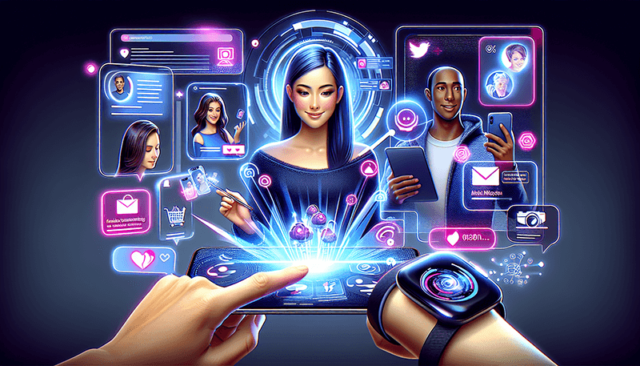In today’s digital landscape, personalization is no longer a luxury—it’s a necessity. Consumers expect tailored experiences that cater to their preferences and behaviors. Artificial Intelligence (AI) has emerged as a powerful tool for driving personalization, enabling businesses to create more engaging, relevant, and user-friendly experiences on their websites. In this blog, we’ll explore how to effectively utilize AI for website personalization and enhance your customer experience.

Table of Contents
Toggle1. Understanding User Behavior
AI can analyze vast amounts of data to understand user behavior on your website. By leveraging machine learning algorithms, businesses can gather insights into how visitors interact with content, products, and services.
Key Actions:
- Implement AI-driven analytics tools, like Google Analytics or Hotjar, to track user behavior and engagement.
- Use heatmaps and session recordings to identify popular areas on your site and understand navigation patterns.
- Segment users based on their behavior to tailor the content and experiences they receive.
2. Dynamic Content Personalization
AI enables dynamic content personalization by serving different content to users based on their preferences, location, and behavior. This ensures that visitors see the most relevant information when they land on your website.
Key Actions:
- Use AI-powered content management systems (CMS) that support dynamic content delivery. Platforms like WordPress with plugins or HubSpot offer this functionality.
- Create user profiles that capture preferences and interests, allowing your website to show personalized recommendations.
- Implement recommendation engines that suggest products or articles based on user behavior and historical data.
3. Chatbots and Virtual Assistants
AI-powered chatbots and virtual assistants can enhance user engagement and provide personalized support 24/7. These tools can answer questions, guide users through the sales funnel, and provide recommendations based on user input.
Key Actions:
- Integrate chatbots like Drift or Intercom on your website to assist visitors in real-time.
- Train your chatbots to recognize user intents and respond with personalized solutions.
- Use conversational AI to create interactive experiences that engage users and drive them toward conversion.
4. Predictive Analytics for Recommendations
AI can analyze historical data to predict future behavior, allowing you to anticipate user needs and preferences. Predictive analytics can be particularly effective in e-commerce, where you can recommend products based on past purchases or browsing history.
Key Actions:
- Use predictive analytics tools like Pendo or Mixpanel to identify trends and forecast user behavior.
- Implement product recommendation systems that utilize AI to suggest items based on users’ past interactions.
- Analyze conversion patterns to refine recommendations and enhance user experiences.
5. Email Personalization
AI can optimize email marketing efforts by personalizing content based on user behavior and preferences. This approach ensures that your messages resonate with the recipient, increasing open rates and engagement.
Key Actions:
- Use AI-driven email marketing platforms like Mailchimp or Klaviyo to segment your audience and tailor content.
- Analyze user interactions with previous emails to determine the best times and types of content to send.
- Create personalized subject lines and content based on user interests, improving overall email performance.
6. Optimizing User Experience (UX)
AI can enhance the overall user experience on your website by analyzing feedback and behavior to make data-driven adjustments. This can lead to improved navigation, layout, and design that cater to user preferences.
Key Actions:
- Utilize AI tools like Crazy Egg or Optimizely to conduct A/B testing and gather insights on user preferences.
- Analyze feedback and interaction data to identify areas for improvement in your website’s design and functionality.
- Continuously iterate on your website’s UX by using AI insights to make informed decisions.
7. Personalized Marketing Campaigns
AI can help create highly targeted marketing campaigns that resonate with specific audience segments. By analyzing customer data, businesses can tailor messaging and offers to individual preferences.
Key Actions:
- Leverage AI tools like HubSpot or Salesforce to automate personalized marketing campaigns.
- Use customer segmentation to identify specific groups for tailored marketing efforts.
- Monitor campaign performance and adjust strategies based on AI-driven insights.
Conclusion
Leveraging AI for personalization on your website can significantly enhance user experience, drive engagement, and ultimately increase conversions. By understanding user behavior, delivering dynamic content, and utilizing predictive analytics, businesses can create tailored experiences that resonate with their audience. As technology continues to advance, those who embrace AI-driven personalization will be well-positioned to thrive in an increasingly competitive digital landscape. Start exploring these AI tools and strategies today to transform your website into a personalized hub that delights your visitors!


No responses yet